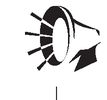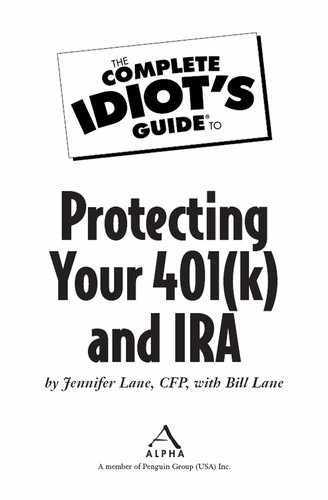Getting Started: Opening and Investing Your IRA
Most financial institutions that sell investment vehicles like mutual funds and bank accounts provide IRA accounts to hold the investments in. The most common are banks and credit unions, mutual fund companies, insurance companies, and brokerage firms.
An asset allocation plan works like an investment recipe for all your accounts. It dictates the percentage of your portfolio you’ll invest in each asset class, such as stocks, bonds, and cash. How much of each class to target is determined by factors such as your age, your risk tolerance, and your investment goals.
Each type of financial institution will have its own selection of investment vehicles to pick from. Which institution you choose depends on how well their investment selection allows you to pick investments that fit your target asset allocation plan and the investment cost. Chapter 7 will help you decide what asset allocation or investment you want.
When it’s time to open your IRA, the financial institution you choose to work with will act as the account trustee. Many trustees charge an annual fee to maintain the IRA account, typically around $25, that may be waived once the IRA reaches a certain size.

Nest Eggs
Managing several individual IRAs with investments like stocks, mutual funds, or money market accounts in separate scattered accounts can get confusing. Brokerage firms like Fidelity Investments, the Vanguard Group, and Charles Schwab offer brokerage accounts that consolidate your separate investments into one account, which makes managing them easier.
The trustee also will give you the unavoidable paperwork. They’ll give you an IRA adoption agreement and a plan document that describes the operational details of your account, which will include the types of allowable investments, contribution limits, and the process for making deposits and withdrawals. Your account is open once you sign the adoption agreement, which is usually part of the account application.
Predictably, the plan document is very long, but keep a copy to refer to and simply to have in your records. Most institutions maintain their documents on their website; saving an electronic copy will save you space and paper.

Rainy Days
The IRA is the holding account for the investments, not the investment itself. Sometimes the name an institution gives their IRA accounts imply that the IRA is the investment, too. If your bank calls the account an “IRA CD,” remember that the two are separate. The certificate of deposit is the investment held within the IRA account.
You must make contributions in cash, usually via a check paid to the trustee. Common investments for IRAs are certificates of deposit, savings and money market accounts, mutual funds, annuities, and individual stocks and bonds.
• Certificates of deposit Like savings accounts, CDs also have FDIC insurance and can be bought from either a bank or a brokerage firm. CDs usually earn more interest than savings or money market accounts. Unlike savings and money market accounts, you can’t move your money out of a CD any time you want. If you withdraw your money before the CD matures, you’ll pay a penalty usually equal to a few months’ interest.
• Savings and money market accounts These simple interest-earning accounts are available at banks, credit unions, or brokerage firms. They are a conservative IRA investment because their principal is often insured and they carry very low fees. You can move your money into or out of a savings or money market account and into another investment in your IRA anytime you want without a penalty.
• Mutual funds Mutual funds are a great investment option for IRAs because they offer stock and bond market investments without the hassle of having to pick individual stock or bond investments yourself. A mutual fund is a basket of individual investments—stocks, bonds, or even some cash—bundled together into one product. They are as risky or safe as the investments within them, so do your research and understand whether you’re buying a risky mutual fund or a relatively safer one. You can open an IRA and invest in mutual funds by working directly with the mutual fund company or by buying the fund in your IRA brokerage account.
• Annuities Annuities come in two flavors, fixed and variable. Fixed annuities are a lot like certificates of deposit because they pay a fixed rate of interest that readjusts on a yearly basis. Some fixed annuities pay a higher teaser rate initially and then settle down to regular market rates for the remainder of their maturity period. Variable annuities are like mutual funds, containing a basket of individual stock or bond investments called subaccounts. These annuities change in value based on the performance of the investments in the subaccounts. Annuities are sold by life insurance companies and feature a life insurance component that increases their cost compared to a mutual fund and makes them tax-deferred, whether they are held in an IRA or not.
Any sales commissions or investment expenses inside your IRA reduce the value of your statutorily capped contributions and your investment’s potential to grow. So avoid high investment expenses whenever you can. Annuities and some mutual funds carry high sales commissions and are bad investment choices for your IRA.

Rainy Days
IRAs can incur two types of fees, trustee fees and investment-related costs. The investment’s prospectus outlines the investment fees, which can include sales commissions, management fees, and a “12-b1” marketing fee. Protect your IRA from fees by considering commission-free no-load mutual funds and by paying trustee fees out-of-pocket instead of having them withdrawn from your IRA.
..................Content has been hidden....................
You can't read the all page of ebook, please click here login for view all page.
